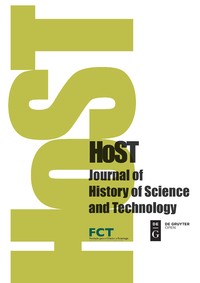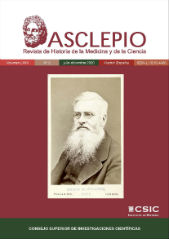
Emilio Quevedo Vélez is full professor at the School of Medicine and Health Sciences, and Director of the Social Studies of Sciences, Technologies and Professions Group of Universidad del Rosario. Marlin Téllez Pedroza is Professor at Departamento de Enfermería en Salud Colectiva, Facultad de Enfermería, Pontificia Universidad Javeriana. Bogotá, Colombia.
This paper – The birth of a Ministry of Public Health in Colombia, 1946-1953: Cold War, invisible government and asymmetrical interdependence (HCSM vol. 29 n.2, Apr-Jun 2022) – studies the shift process from a Ministry of Hygiene to a Ministry of Public Health in the country. It was not only a new way to rename the Ministry, but a transitional process from the State policies based on European Public Hygiene towards the institutionalisation of North American model of Public Health).
In this process, local governmental representatives had to negotiate with members of the Currie Mission, which was sent to Colombia by the Inter-American Bank for Reconstruction and Development (IBRD), and with officers of the Inter-American Cooperative Health Service (IACHS). This happened in asymmetrical interdependence relationships, in the frame of the ‘invisible government’ implemented in Latin America by the United States during the Cold War.
The authors, Marlin Téllez Pedroza and Emilio Quevedo Vélez show that the shift process from a Ministry of Hygiene to a Ministry of Public Health in Colombia (1946-1953), happened in asymmetrical interdependence relationships, in the frame of the ‘invisible government’ implemented in Latin America by the United States during the Cold War (Wise, Ross, 1964, p.3-7).
In Colombia, the acceptance of the international experts’ advices was vital in the adoption of the new organisational structure of the Ministry that reinforced the National Government interests, as they acted as powerful institutional regulators. This study explains how the local governmental representatives had to negotiate with members of the Currie Mission, which was sent to Colombia by the Inter-American Bank for Reconstruction and Development (IBRD), and with officers of the Inter American Cooperative Health Service (IACHS) (Currie, 1950, p.232).
The new institution was the result of the definitive acceptance and institutionalisation of the Rockefeller Foundation’s public health model for backward countries and its practices in Colombia. This process backed first by the Foundation and then by the intervention of the Servicio Cooperativo Interamericano de Salud Pública (SCISP), gave the new Ministry its social recognition and legitimacy in the frame of the Cold War. Exogenous and endogenous forces promoted the institutional change, throughout the studied trajectory (1946-1953), showing that in the negotiation process, both types of forces coincided in the necessity to improve health conditions in the country but the exogenous forces prevailed over the endogenous ones, imposing their own vision of the way to do it.
The description of this historical transitional process intends to fill the gap of knowledge regarding the emergence of this institution, and highlights its important influence on health in the country and its longer existence than that one of its predecessor, the Ministry of Hygiene. A socio-political approach was used in articulation with a historical neo-institutionalism that implied bringing the State and other socio-political actors’ actions back to the centre of the explanations of the institutional change process in the Ministry (Skocpol, 1985, p.3-37).
References:
CURRIE, Lauchlin. Bases de un Programa de Fomento para Colombia: Informe de una Misión. Bogotá, Imprenta del Banco de la República. 1950.
SKOCPOL, Theda. Bringing the State Back. In: Evans, Peter B.; Rueschemeyer, Dietrich; Skocpol, Theda. Strategies of analysis in Current Research. New York, Cambridge University Press 3-37. 1985.
WISE, David; ROSS, Thomas B. The Invisible Government. New York, Random House. 1964.
How to cite this article:
Téllez, Marlin and Quevedo, Emilio. The birth of a Ministry of Public Health in Colombia, 1946-1953: Cold War, invisible government and asymmetrical interdependence. História, Ciências, Saúde-Manguinhos [online]. 2022, v. 29, n. 2 [Accessed 12 July 2022] , pp. 461-480.
See HCS Manguinhos’ full issue: História, Ciências, Saúde-Manguinhos, Volume: 29, Issue: 1, Published: 2022









